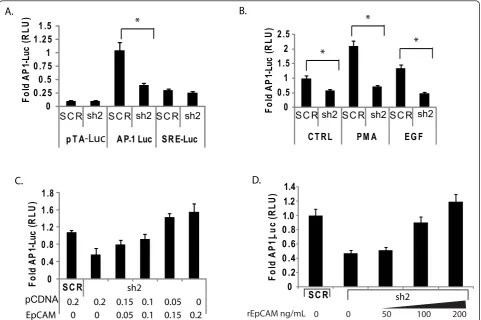Activator protein 1 (AP 1) contributes to EpCAM dependent breast cancer invasion
Full text
Figure




Related documents
The groups of patients that underwent AT and ST showed significant clinical improvements in the motor symptoms of PD, as well as in functional capacity, indicating that pre-
Such as murine cytomegalo virus infection, avian influenza (H9N2), Chistosoma Mansoni Infection, PPR virus, Broad bean mosaic virus, HIV virus, Hepatitis C Virus,
The nickel based nano particles have wide applications in view of their catalytic, magnetic and semi conducting nature. They are used as electrodes in solid oxide fuel
Background: The purpose of our study was to estimate the influence of estimated intraoperative blood loss (EIBL) on postoperative cardiopulmonary complications (PCCs) in
and Performance of a household Refrigerator using Phase Change Materials – Based on Thermal Energy. Storage by Pankaj Mittal , K.T.Yang , Department of Aerospace and


